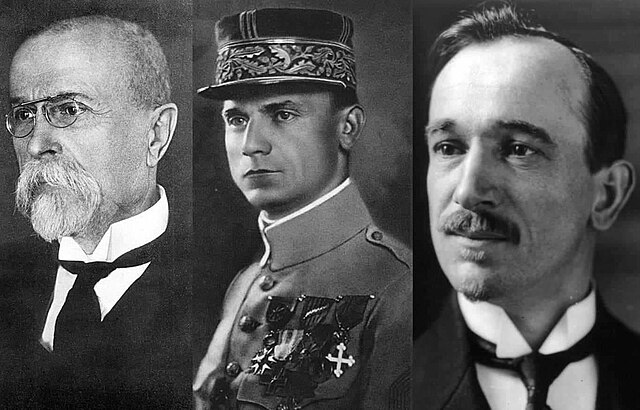Edvard Beneš was a Czech politician and statesman who served as the president of Czechoslovakia from 1935 to 1938, and again from 1939 to 1948. During the first six years of his second stint, he led the Czechoslovak government-in-exile during World War II.
Beneš c. 1942
Edvard Beneš with his wife Hana in 1934
Triumvirate of Tomáš Garrigue Masaryk, Milan Rastislav Štefánik, and Edvard Beneš.
Time cover, 23 March 1925
Czechoslovak government-in-exile
The Czechoslovak government-in-exile, sometimes styled officially as the Provisional Government of Czechoslovakia, was an informal title conferred upon the Czechoslovak National Liberation Committee, initially by British diplomatic recognition. The name came to be used by other Allied governments during the Second World War as they subsequently recognised it. The committee was originally created by the former Czechoslovak President, Edvard Beneš in Paris, France, in October 1939. Unsuccessful negotiations with France for diplomatic status, as well as the impending Nazi occupation of France, forced the committee to withdraw to London in 1940. The Czechoslovak Government-in-Exile offices were at various locations in London but mainly at a building called Fursecroft, Marylebone.
Edvard Beneš
The Czechoslovak 11th Infantry Battalion fighting alongside Poles and Australians at the Siege of Tobruk
Czechoslovak troops in London
Troops from the 1st Czechoslovak Armoured Brigade, part of the British army, photographed in De Panne in 1945







